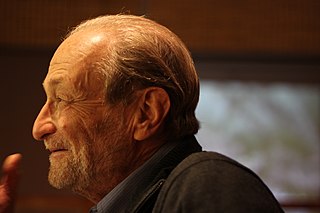
Cognitive science is the interdisciplinary, scientific study of the mind and its processes with input from linguistics, psychology, neuroscience, philosophy, computer science/artificial intelligence, and anthropology. It examines the nature, the tasks, and the functions of cognition. Cognitive scientists study intelligence and behavior, with a focus on how nervous systems represent, process, and transform information. Mental faculties of concern to cognitive scientists include language, perception, memory, attention, reasoning, and emotion; to understand these faculties, cognitive scientists borrow from fields such as linguistics, psychology, artificial intelligence, philosophy, neuroscience, and anthropology. The typical analysis of cognitive science spans many levels of organization, from learning and decision to logic and planning; from neural circuitry to modular brain organization. One of the fundamental concepts of cognitive science is that "thinking can best be understood in terms of representational structures in the mind and computational procedures that operate on those structures."

Cognitive neuroscience is the scientific field that is concerned with the study of the biological processes and aspects that underlie cognition, with a specific focus on the neural connections in the brain which are involved in mental processes. It addresses the questions of how cognitive activities are affected or controlled by neural circuits in the brain. Cognitive neuroscience is a branch of both neuroscience and psychology, overlapping with disciplines such as behavioral neuroscience, cognitive psychology, physiological psychology and affective neuroscience. Cognitive neuroscience relies upon theories in cognitive science coupled with evidence from neurobiology, and computational modeling.
Global workspace theory (GWT) is a framework for thinking about consciousness proposed by cognitive scientists Bernard Baars and Stan Franklin in the late 1980s. It was developed to qualitatively account for a large set of matched pairs of conscious and unconscious processes. GWT has been influential in modeling consciousness and higher-order cognition as emerging from competition and integrated flows of information across widespread, parallel neural processes.

Jacques Mehler was a cognitive psychologist specializing in language acquisition.
Developmental cognitive neuroscience is an interdisciplinary scientific field devoted to understanding psychological processes and their neurological bases in the developing organism. It examines how the mind changes as children grow up, interrelations between that and how the brain is changing, and environmental and biological influences on the developing mind and brain.
Numerical cognition is a subdiscipline of cognitive science that studies the cognitive, developmental and neural bases of numbers and mathematics. As with many cognitive science endeavors, this is a highly interdisciplinary topic, and includes researchers in cognitive psychology, developmental psychology, neuroscience and cognitive linguistics. This discipline, although it may interact with questions in the philosophy of mathematics, is primarily concerned with empirical questions.

Stanislas Dehaene is a French author and cognitive neuroscientist whose research centers on a number of topics, including numerical cognition, the neural basis of reading and the neural correlates of consciousness. As of 2017, he is a professor at the Collège de France and, since 1989, the director of INSERM Unit 562, "Cognitive Neuroimaging".
In human developmental psychology or non-human primate experiments, ordinal numerical competence or ordinal numerical knowledge is the ability to count objects in order and to understand the greater than and less than relationships between numbers. It has been shown that children as young as two can make some ordinal numerical decisions. There are studies indicating that some non-human primates, like chimpanzees and rhesus monkeys have some ordinal numerical competence.
The Dehaene–Changeux model (DCM), also known as the global neuronal workspace or the global cognitive workspace model, is a part of Bernard Baars's "global workspace model" for consciousness.

Daniel Choquet is a French neuroscientist.

The visual word form area (VWFA) is a functional region of the left fusiform gyrus and surrounding cortex that is hypothesized to be involved in identifying words and letters from lower-level shape images, prior to association with phonology or semantics. Because the alphabet is relatively new in human evolution, it is unlikely that this region developed as a result of selection pressures related to word recognition per se; however, this region may be highly specialized for certain types of shapes that occur naturally in the environment and are therefore likely to surface within written language.
Selective auditory attention, or selective hearing, is a process of the auditory system where an individual selects or focuses on certain stimuli for auditory information processing while other stimuli are disregarded. This selection is very important as the processing and memory capabilities for humans has a limited capacity. When people use selective hearing, noise from the surrounding environment is heard by the auditory system but only certain parts of the auditory information are chosen to be processed by the brain.

The neuronal recycling hypothesis was proposed by Stanislas Dehaene in the field of cognitive neuroscience in an attempt to explain the underlying neural processes which allow humans to acquire recently invented cognitive capacities. This hypothesis was formulated in response to the 'reading paradox', which states that these cognitive processes are cultural inventions too modern to be the products of evolution. The paradox lies within the fact that cross-cultural evidence suggests specific brain areas are associated with these functions. The concept of neuronal recycling resolves this paradox by suggesting that novel functions actually utilize and 'recycle' existing brain circuitry. Once these cognitive functions find a cortical area devoted to a similar purpose, they can invade the existing circuit. Through plasticity, the cortex can adapt in order to accommodate for these novel functions.
Grand Prix scientifique de la Fondation NRJ is an award conferred annually by the Foundation NRJ at the Institut de France. It is awarded in the areas of medical science, particularly neuroscience. Each year the prize has a different theme. The award has a €150,000 prize.
Núria Sebastián Gallés is a cognitive scientist known for her work on bilingual language development and the impact of bilingualism on cognition. She is Professor of Psychology at Pompeu Fabra University where she heads the Speech Acquisition and Perception (SAP) Research Group. In 2012, Sebastián Gallés received the Narcis Monturiol Medal as recognition of her scientific contributions. She was elected Fellow of the British Academy in 2016.
Lisa Feigenson is Professor of Psychological and Brain Sciences at Johns Hopkins University and co-director of the Johns Hopkins University Laboratory for Child Development. Feigenson is known for her research on the development of numerical abilities, working memory, and early learning. She has served on the editorial board of Cognition and the Journal of Experimental Psychology: General.
Catherine J. "Cathy" Price is a British neuroscientist and academic. She is a professor of cognitive neuroscience and director of the Wellcome Trust Centre for Neuroimaging at University College London.
Lucina Q. Uddin is an American cognitive neuroscientist who is a professor at the University of California, Los Angeles. Her research investigates the relationship between brain connectivity and cognition in typical and atypical development using network neuroscience approaches.
Patricia Ann Reuter-Lorenz is an American psychologist who is the Michael I. Posner Collegiate Professor of Psychology and Neuroscience at the University of Michigan. Reuter-Lorenz is Chair of the School of Psychology and researches the cognitive mechanisms of attention. She was elected Fellow of the American Association for the Advancement of Science.
Catherine Lubetzki is a French neurologist who is a professor at Sorbonne University. She is head of the Department of Neurological Diseases at the Pitié-Salpêtrière Hospital, where she coordinates the Salpêtrière Multiple Sclerosis clinical research centre. Her research involves the physiology of multiple sclerosis, and identifying the interactions between myelin and axons. In 2019, she was awarded the Multiple Sclerosis International Federation Charcot Award.







